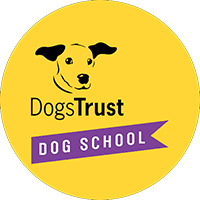What is positive reinforcement and reward-based dog training?
Dogs love rewards! Whether that’s food, toys, or a verbal reward, giving your dog a reward when they make a good choice can be a powerful motivator. Positive reinforcement is all about teaching your dog good things happen as a direct result of the good choice they’ve just made.
As your dog starts to associate their reward with the behaviour they just completed, they’ll be more likely to do the same thing again next time.
What are the benefits of positive reinforcement dog training?
Using reward-based training methods is the best way to encourage your dog to behave the way you would like. There are many benefits to using training with rewards, including:
- It helps build a positive bond between you and your dog.
- Owners who use positive reinforcement report fewer behavioural problems.
- Reward-based training helps to build your dog’s confidence and encourage them to think for themselves.
- This method is scientifically backed as the most effective way for dogs to learn.
What can be used as a reward?
All dogs are different so will naturally find different things rewarding. The key is to find the one that your dog likes best; you can watch our video above to find out how to discover your dog’s favourite reward.
Your dog is an individual, so their motivators will be unique to them. However, most dogs enjoy either food, toys or our attention! Whatever you choose needs to be safe for your dog and something they like.
Food
Many dogs are food-oriented and will be very motivated to learn new behaviours if there’s the chance of a tasty treat! When training, it’s a good idea to use a blend of high and low value food rewards. High-value rewards can be things like mild cheddar cheese, sausage, a homemade treat, or cooked chicken. Chop these up into fingernail-sized pieces and use them when training new techniques or to keep your dog’s focus and attention in a challenging environment with lots of distractions.
Low-value rewards like your dog’s normal dried food or small pieces of vegetable can be used when a behaviour is easy for your dog to get right, for example when practising a cue they know well in a quiet environment.
If you do use food as a reward during training sessions, remember to account for the extra calories and reduce your dog’s daily rations accordingly.
Toys
Some dogs are more motivated by play than food, so offering a quick game of fetch or tug with their favourite toy as a reward for good behaviour can work very well. You can also use positive reinforcement to teach your dog how to release their toys when you ask, so you can get the most out of your training sessions.
Attention
Don’t underestimate how valuable your attention is to your dog! Many dogs love it when we look at, touch, or talk to them. That means our attention can constantly influence their behaviour and you can harness this effect during your training sessions.
Remember that even negative attention can sometimes be reinforcing and can act as an unintentional reward. For example, if you’re asking your dog not to jump up, the very fact that your dog is getting attention might encourage them to continue that behaviour. Make sure you give your dog your attention when they’re doing something you do want them to do, rather than the other way around.
Other
Rewards can be anything your dog loves! Sometimes, things like going off lead, foraging for treats, a quick game, sniffing or playing with other dogs will be a great motivator and reward.
How to train a dog using positive reinforcement and rewards
Ready to start training? Find the answers to some frequently asked questions, plus positive reinforcement dog training tips to get you started.
When can I use positive reinforcement?
Anytime, anywhere! Whenever you’re happy with your dog’s behaviour, let them know by rewarding them. If you’re praising them for calm and quiet behaviour, give them a reward like a gentle fuss, a treat or some quiet verbal praise so they don’t get overexcited. If you’re working on recall training while you’re out and about, then a reward of an energetic game or a high-value treat could be more appropriate. As long as your dog is enjoying it — it’s a reward!
Sometimes your dog may need a different type of reward. They may find a specific behaviour easy in the calmness of your own home, but much more challenging in a busy environment like the dog park. In these situations, switch to a more tempting reward like a piece of their favourite sausage or a particular toy you know they love.
As you become more confident when training, you’ll get a better idea of the things your dog loves and how to use these as rewards in a range of scenarios.
What can I teach my dog using positive reinforcement?
This training technique can be used to teach your dog any behaviour you like! Crate training, nice walking, house training and so much more - it’s all possible with positive reinforcement.
It’s a good idea to start with the basics and build your way up to more complex cues. When you start teaching your dog a new behaviour, it’s important that you reward them every single time they succeed. Once they’ve learnt the new behaviour and can complete it in a variety of environments, you can start switching up the type of reward you offer. For example, if you’ve been using high-value rewards, switch to verbal praise or low-value treats instead. By mixing and matching the rewards, you can keep your dog’s interest as they’ll never know what to expect.


